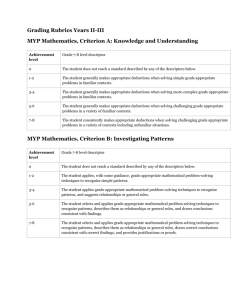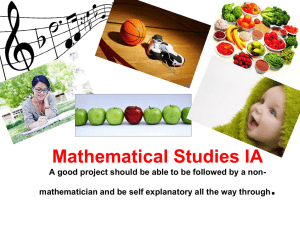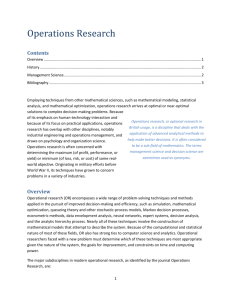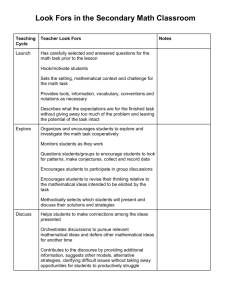MYP Mathematics Assessment Criteria
advertisement
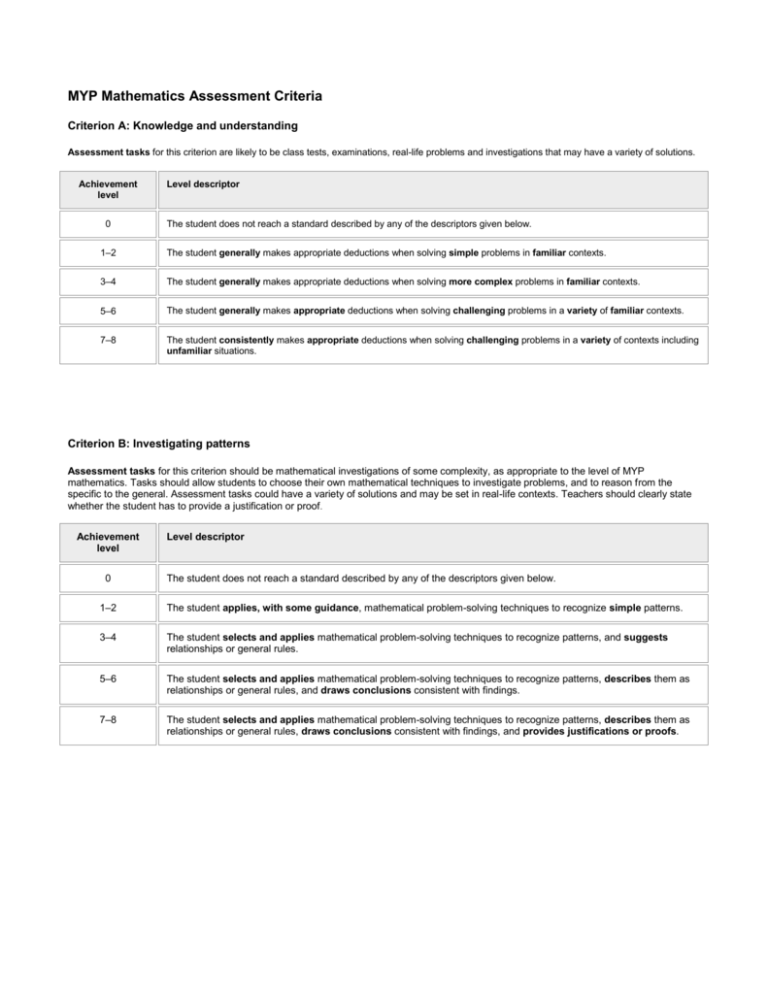
MYP Mathematics Assessment Criteria Criterion A: Knowledge and understanding Assessment tasks for this criterion are likely to be class tests, examinations, real-life problems and investigations that may have a variety of solutions. Achievement level 0 Level descriptor The student does not reach a standard described by any of the descriptors given below. 1–2 The student generally makes appropriate deductions when solving simple problems in familiar contexts. 3–4 The student generally makes appropriate deductions when solving more complex problems in familiar contexts. 5–6 The student generally makes appropriate deductions when solving challenging problems in a variety of familiar contexts. 7–8 The student consistently makes appropriate deductions when solving challenging problems in a variety of contexts including unfamiliar situations. Criterion B: Investigating patterns Assessment tasks for this criterion should be mathematical investigations of some complexity, as appropriate to the level of MYP mathematics. Tasks should allow students to choose their own mathematical techniques to investigate problems, and to reason from the specific to the general. Assessment tasks could have a variety of solutions and may be set in real-life contexts. Teachers should clearly state whether the student has to provide a justification or proof . Achievement level 0 Level descriptor The student does not reach a standard described by any of the descriptors given below. 1–2 The student applies, with some guidance, mathematical problem-solving techniques to recognize simple patterns. 3–4 The student selects and applies mathematical problem-solving techniques to recognize patterns, and suggests relationships or general rules. 5–6 The student selects and applies mathematical problem-solving techniques to recognize patterns, describes them as relationships or general rules, and draws conclusions consistent with findings. 7–8 The student selects and applies mathematical problem-solving techniques to recognize patterns, describes them as relationships or general rules, draws conclusions consistent with findings, and provides justifications or proofs. Criterion C: Communication in mathematics Assessment tasks for this criterion are likely to be real-life problems, tests, examinations and investigations. Tests and examinations that are to be assessed against criterion C must be designed to allow students to show complete lines of reasoning using mathematical language. Achievement level 0 Level descriptor The student does not reach a standard described by any of the descriptors given below. 1–2 The student shows basic use of mathematical language and/or forms of mathematical representation. The lines of reasoning are difficult to follow. 3–4 The student shows sufficient use of mathematical language and forms of mathematical representation. The lines of reasoning are clear though not always logical or complete. The student moves between different forms of representation with some success. 5–6 The student shows good use of mathematical language and forms of mathematical representation. The lines of reasoning are concise, logical and complete. The student moves effectively between different forms of representation. Criterion D: Reflection in mathematics Assessment tasks are most likely to be investigations and real-life problems. Generally these types of tasks will provide students with opportunities to use mathematical concepts and skills to solve problems in real-life contexts. Achievement level 0 Level descriptor The student does not reach a standard described by any of the descriptors given below. 1–2 The student attempts to explain whether his or her results make sense in the context of the problem. The student attempts to describe the importance of his or her findings in connection to real life. 3–4 The student correctly but briefly explains whether his or her results make sense in the context of the problem and describes the importance of his or her findings in connection to real life. The student attempts to justify the degree of accuracy of his or her results where appropriate. 5–6 The student critically explains whether his or her results make sense in the context of the problem and provides a detailed explanation of the importance of his or her findings in connection to real life. The student justifies the degree of accuracy of his or her results where appropriate. The student suggests improvements to the method when necessary.

